Systematic Experimental Investigation on In-Situ Self-Adaptive Sealing Property of Composite Pressure-Activated Sealant for Curing Minor Tubular Leaks
Abstract
1. Introduction
2. Materials and Methods
2.1. Materials
2.2. Preparation of the Pressure-Activated Sealant
2.2.1. General Pressure-Activated Sealant
2.2.2. Composite Pressure-Activated Sealant
2.3. Measurements
2.3.1. Mesostructure Characterization
2.3.2. Dynamic Sealing Test
2.4. Field Trial
3. Results and Discussion
3.1. Mesostructure Analysis
3.1.1. Mesostructure of the Coalescence Particulates
3.1.2. Mesostructure of the Coalescence Particulate Clusters
3.2. Sealing Evaluation
3.2.1. Dynamic Seal of Sealant 0
3.2.2. Comparison of the Seal Pressures of Sealants 0 and I
3.2.3. Comparison of the Seal Pressures of Sealants I and II
3.3. Mechanism on Self-Adaptive Seal of Composite Sealants
3.4. Field Implementation
3.4.1. Leak Status
3.4.2. Leak Repair Execution
3.4.3. Seal Evaluation
4. Conclusions
Author Contributions
Funding
Conflicts of Interest
References
- Kupresan, D.; Heathman, J.; Radonjic, M. Casing expansion as a promising slution for microannular gas migration. SPE Drill. Completion 2014, 29, 336–371. [Google Scholar] [CrossRef]
- Bryson, K.; Fowkers, M.; Booth, P.; Mock, C. Pipeline repair using epoxy technology; Paper OTC-25656-MS. In Proceedings of the Offshore Technology Conference, Houston, TX, USA, 4–7 May 2015. [Google Scholar] [CrossRef]
- Mebratu, A.; Nerland, B.; Kleppan, T. Annular barrier re-establishment using a long-life, high-strength polymer gel system; Paper SPE 86547. In Proceedings of the SPE International Symposium and Exhibition on Formation Damage Control, Lafayette, LA, USA, 18–20 February 2004. [Google Scholar] [CrossRef]
- Al-Ansari, A.A.; Al-Refal, I.M.; Al-Beshri, M.H.; Pino, R.M.; Leon, G.A.; Knudsen, K.; Sanabria, A.E. Thermal activated resin to avoid pressure build-up in casing-casing annulus (CCA); Paper SPE-175425-MS. In Proceedings of the SPE Offshore Europe Conference and Exhibition, Aberdeen, UK, 8–11 September 2015. [Google Scholar] [CrossRef]
- Lakatos, I.; Szentes, G.; Toro, M.; Karaffa, Z.; Vago, A. Mitigation of formation damage caused by chemical overdosing in water shut-off treatments; Paper SPE-199292-MS. In Proceedings of the SPE International Conference and Exhibition on Formation Damage Control, Lafayette, LA, USA, 19–21 February 2020. [Google Scholar] [CrossRef]
- Rusch, D.W.; Ellis, B.C. Use of pressure-activated sealants to cure sources of casing pressure; Paper SPE-55996-MS. In Proceedings of the SPE Western Regional Meeting, Anchorage, AK, USA, 26–27 May 1999. [Google Scholar] [CrossRef]
- Cary, D.N.; Groomer, V. Drilling riser alternative repair methods for leaking joint seals utilizing pressure-activated sealant technology; Paper SPE-101216-MS. In Proceedings of the IADC/SPE Asia Pacific Drilling Technology Conference and Exhibition, Bangkok, Thailand, 13–15 November 2006. [Google Scholar] [CrossRef]
- Johns, J.E.; Cary, D.N.; Dethlefs, J.C.; Ellis, B.C.; McConnell, M.L.; Schwartz, G.L. Locating and repairing casing leaks with tubing in pace-ultrasonic logging and pressure-activated sealant methods; Paper SPE-108195-MS. In Proceedings of the SPE Offshore Europe Oil and Gas Conference and Exhibition, Aberdeen, UK, 4–7 September 2007. [Google Scholar] [CrossRef]
- Bybee, K. Microannulus leaks repaired with pressure-activated sealant. J. Pet. Technol. 2005, 57, 58–60. [Google Scholar] [CrossRef]
- Singh, A.K.; Patil, B.; Kishore, K.; Khanna, M.; Varma, S.R.; Anderson, C. Casing leak investigation & successful repair by application of pressure-activated liquid sealant in a newly completed well in offshore environment-a case study; Paper SPE-173826-MS. In Proceedings of the SPE Bergen One Day Seminar, Bergen, Norway, 22 April 2015. [Google Scholar] [CrossRef]
- Cary, D.N.; Julian, J.Y.; Jackson, J.C.; Ellis, B.C. Pressure-activated sealants-non-rig solutions in mature fields in Alaska; Paper SPE-163944-MS. In Proceedings of the SPE/ICoTA Coiled Tubing & Well Intervention Conference & Exhibition, The Woodlands, TX, USA, 26–27 March 2013. [Google Scholar] [CrossRef]
- Rodrigues, V.F.; Figueiredo, G.G.; Rusch, D.W.; Videira, J. Use of pressure-activated sealant to cure leaks in subsea wells-a case study in Campos Basin, Brazil; Paper SPE-96432-MS. In Proceedings of the SPE Annual Technical Conference and Exhibition, Dallas, TX, USA, 9–12 October 2005. [Google Scholar] [CrossRef]
- Rusch, D.W.; Romano, M. Internal repair of pipeline leaks using pressure-activated sealant; Paper SPE 91400. In Proceedings of the SPE Eastern Regional Meeting, Charleston, WV, USA, 15–17 September 2004. [Google Scholar] [CrossRef]
- Guo, L.M.; Xiao, M.; Liu, J.X. Pressure-activated sealant. Drill. Fluid Completion Fluid 2015, 32, 65–68. [Google Scholar]
- Xing, X.S.; Xu, L.; Feng, H.Z.; Liu, S.J.; Xu, M.B.; Chen, K. A differential pressure-activated sealant: Preparation, sealing performance and working mechanism. Drill. Fluid Completion Fluid 2019, 36, 789–794. [Google Scholar]
- Wang, L.G.; Yan, J.N.; Feng, W.Q. Design and lab evaluation of ideal packing bridging drilling and completion fluids. J. China Univ. Pet. 2007, 31, 72–76. [Google Scholar]
- Huang, X.B.; Sun, J.S.; Lv, K.H.; Liu, J.P.; Shen, H.K.; Zhang, F. Application of core-shell structural acrylic resin/nano-SiO2 composite in water based drilling fluid to plug shale pores. J. Nat. Gas Sci. Eng. 2018, 55, 418–425. [Google Scholar] [CrossRef]
- Minko, S. Responsive polymer brushes. J. Macromol. Sci. Part C 2006, 46, 397–420. [Google Scholar] [CrossRef]
- Razavi, O.; Vajargah, A.K.; Oort, E.; Aldin, M.; Govindaragan, S. Optimum particle size distribution design for lost circulation control and wellbore strengthening. J. Nat. Gas Sci. Eng. 2016, 35, 836–850. [Google Scholar] [CrossRef]
- Rusch, D.W. Subsea Leaks Cured with pressure-activated sealant; Paper SPE-88566-MS. In Proceedings of the SPE Asia Pacific Oil and Gas Conference and Exhibition, Perth, WA, Australia, 18–20 October 2004. [Google Scholar] [CrossRef]
- Liao, B.; Zhang, G.F.; Wang, L.H.; Zhu, Y.; Yang, J. Deformation and breakup behaviors of a drop in amient liquid under impact. J. Exp. Fluid Mech. 2016, 30, 9–16. [Google Scholar]
- Bai, B.F.; Luo, Z.Y. Deformation, motion and adhesion of complex droplets under flow. Chin. Sci. Bull. 2015, 60, 3349–3366. [Google Scholar] [CrossRef]
- Lipowsky, R. Coupling of bending and stretching deformations in vesicle membranes. Adv. Colloid Interf. Sci. 2014, 208, 14–24. [Google Scholar] [CrossRef] [PubMed]
- Fu, Z. Rubber Material and Techniques, 1st ed.; Chemical Industrial Press: Beijing, China, 2013; pp. 109–119. [Google Scholar]
- O’Reilly, R.K.; Hawker, C.J.; Wooley, K.L. Cross-linked block copolymer micelles: Functional nanostructures of great potential and versatility. Chem. Soc. Rev. 2006, 35, 1068–1083. [Google Scholar] [CrossRef] [PubMed]
- Zheng, L.H.; Kong, L.C.; Cao, Y.; Wang, H.Y.; Han, Z.X.; He, X.Q. The mechanism for fuzy-ball working fluids for controlling & killing lost circulation. Chin. Sci. Bull. 2010, 55, 1520–1528. [Google Scholar]
- Lv, K.H.; Qiu, Z.S.; Wei, H.M.; Li, X.F.; Song, Y.S. Study on techniques of auto-adapting lost circulation resistance and control for drilling fluid. Acta Pet. Sin. 2008, 29, 757–760. [Google Scholar]
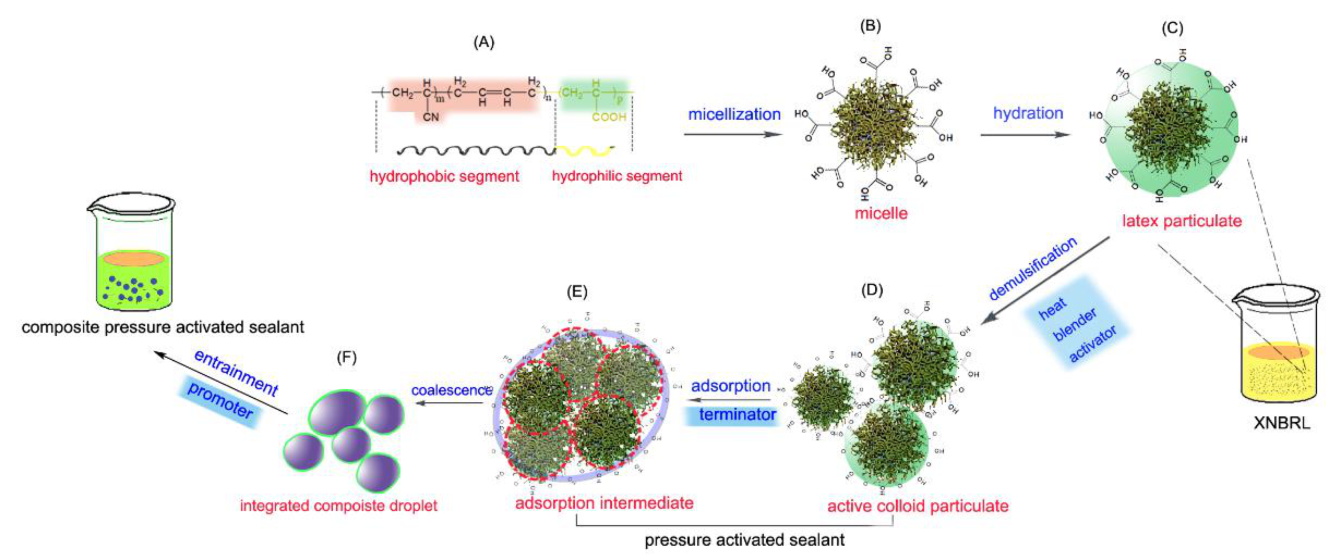
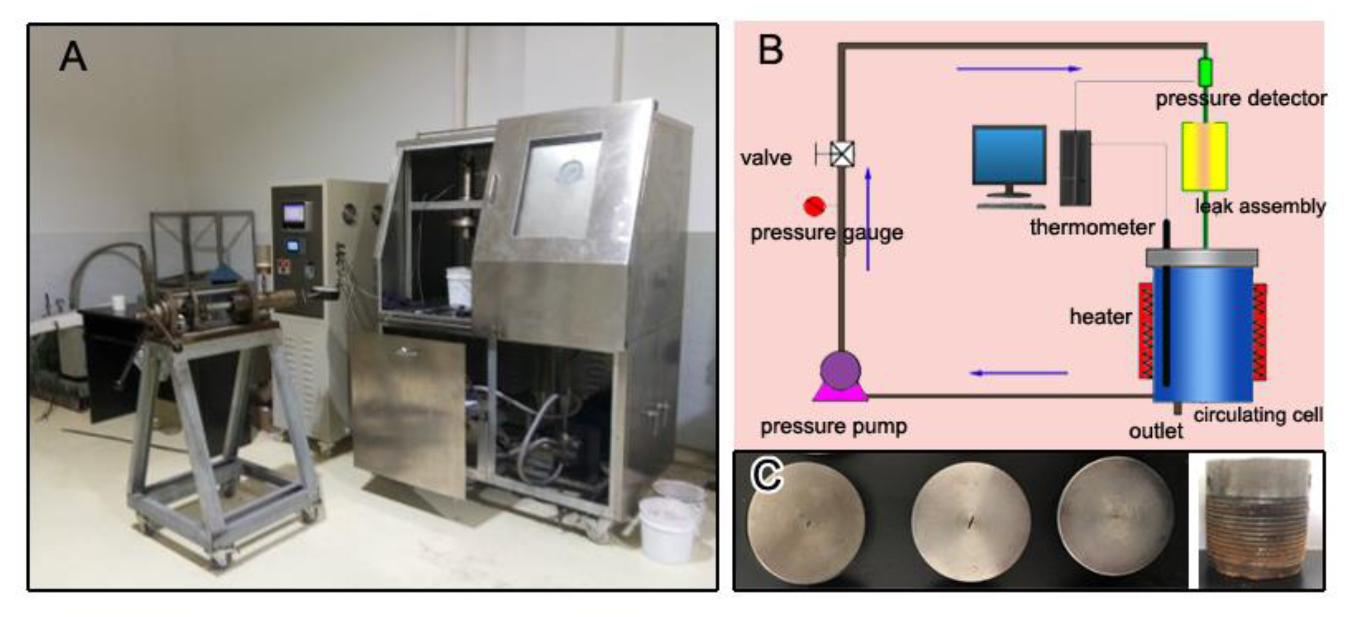

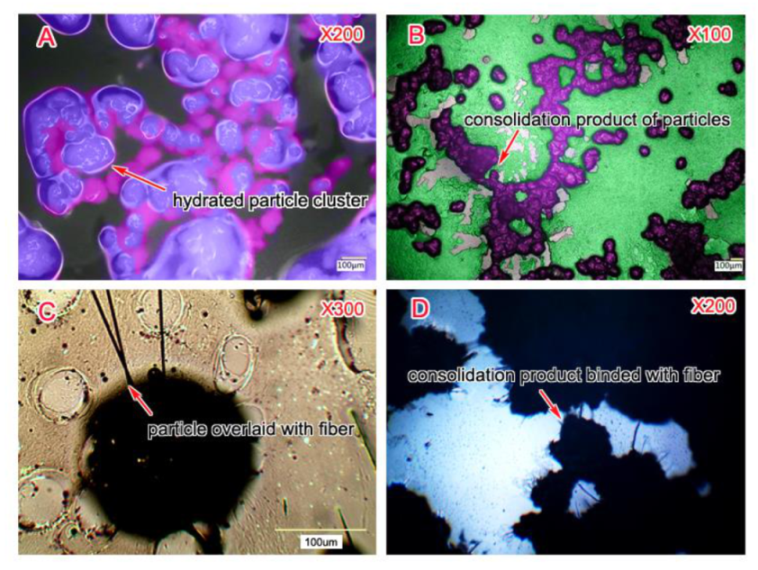
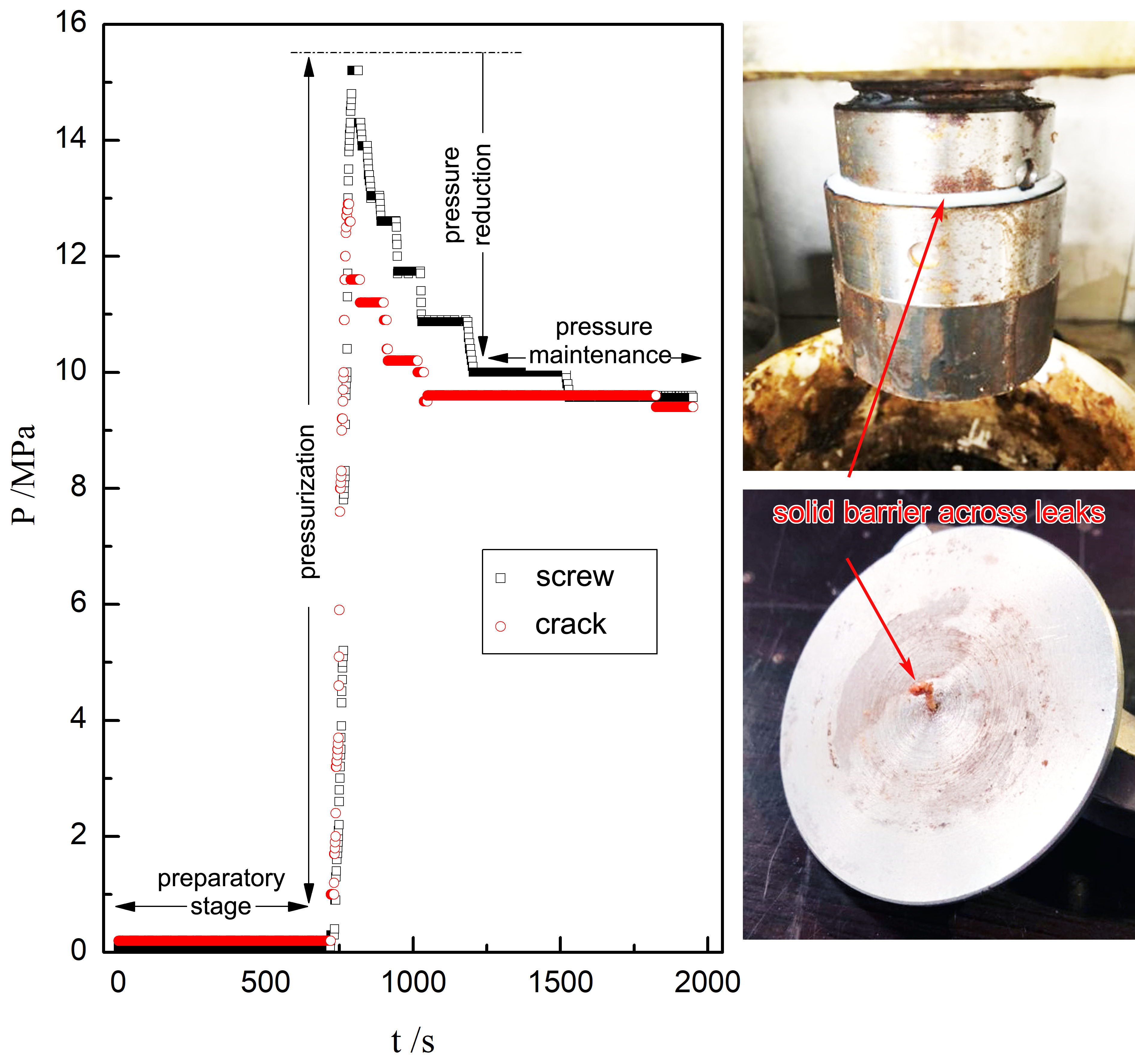
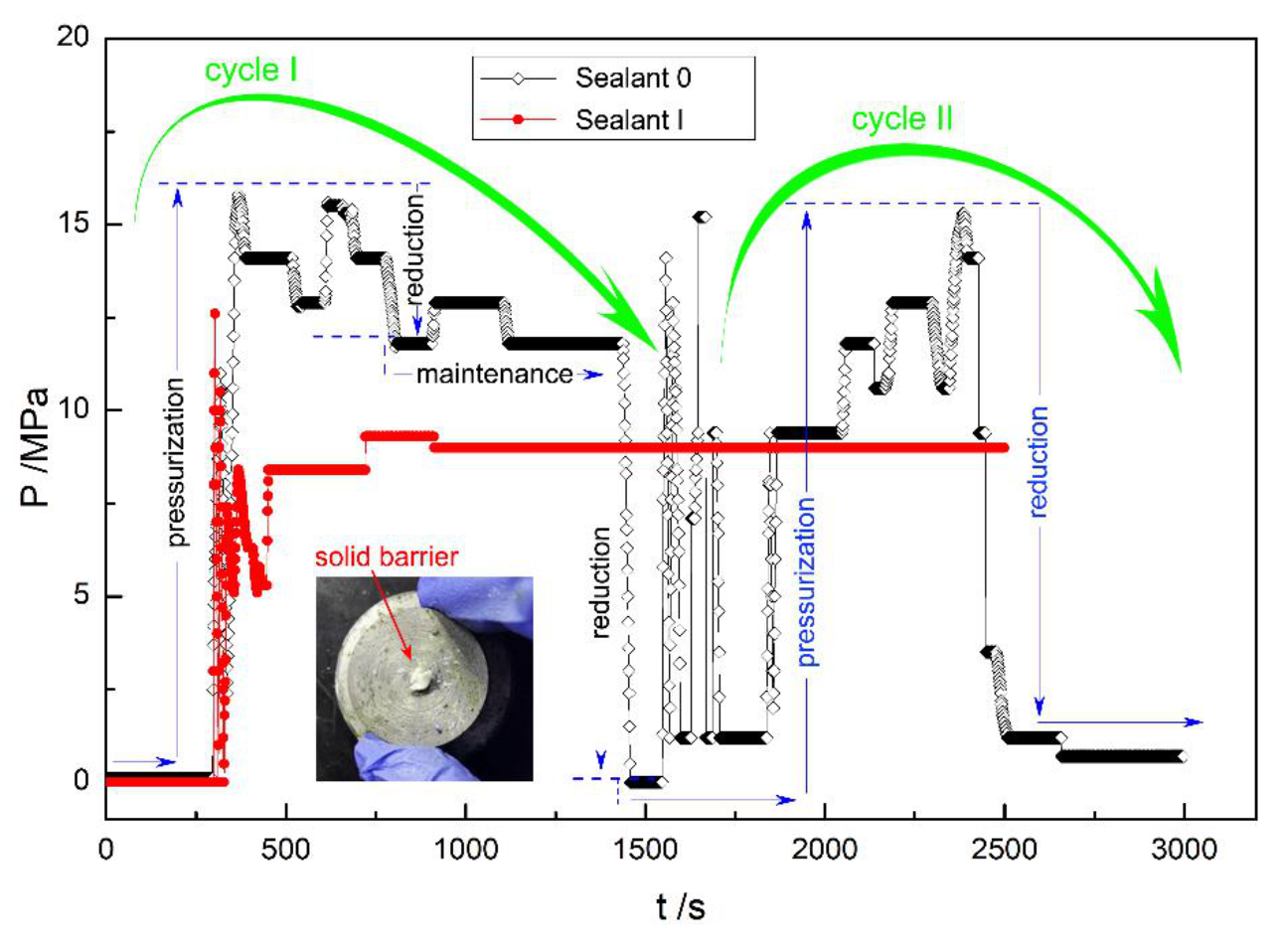
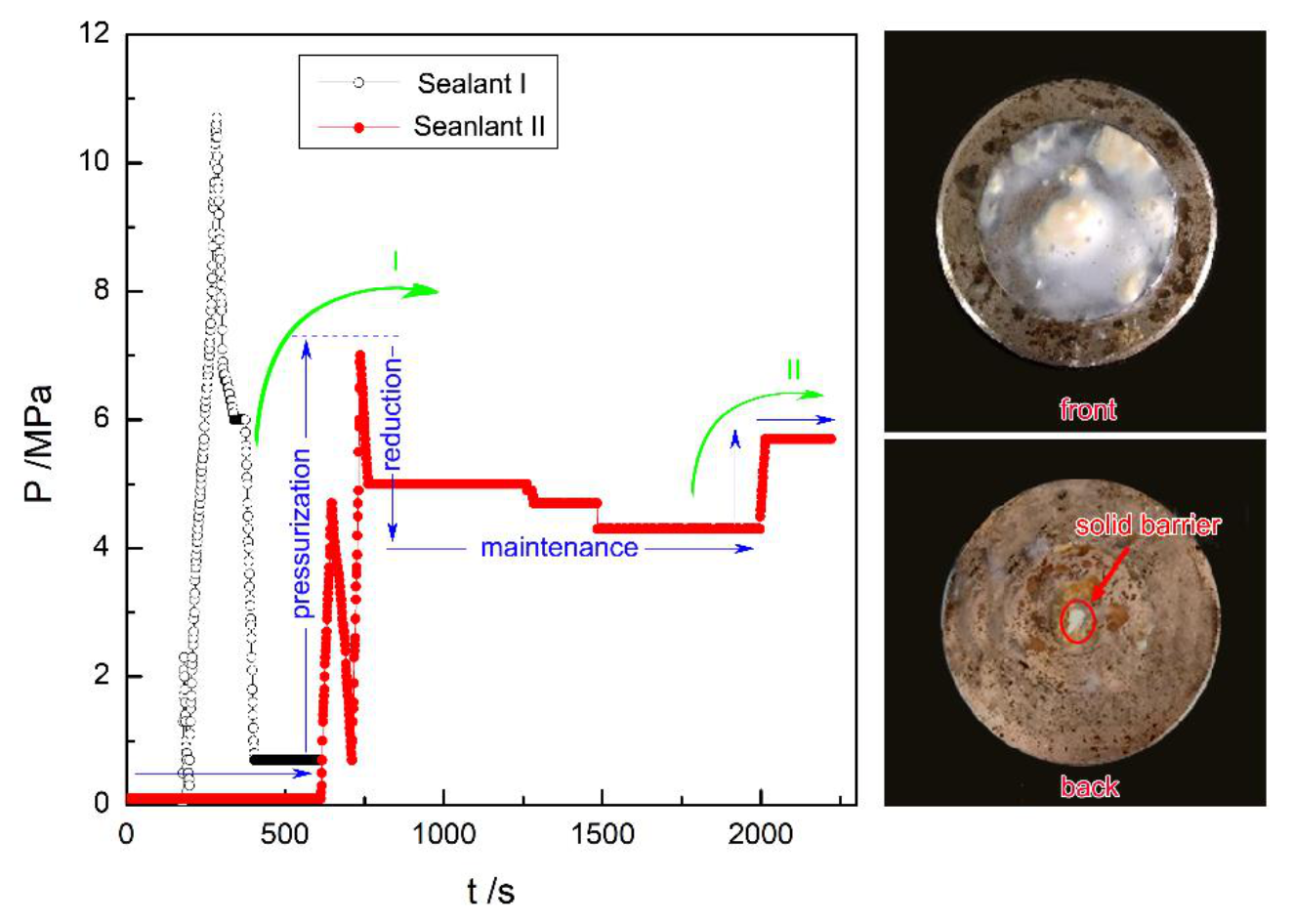

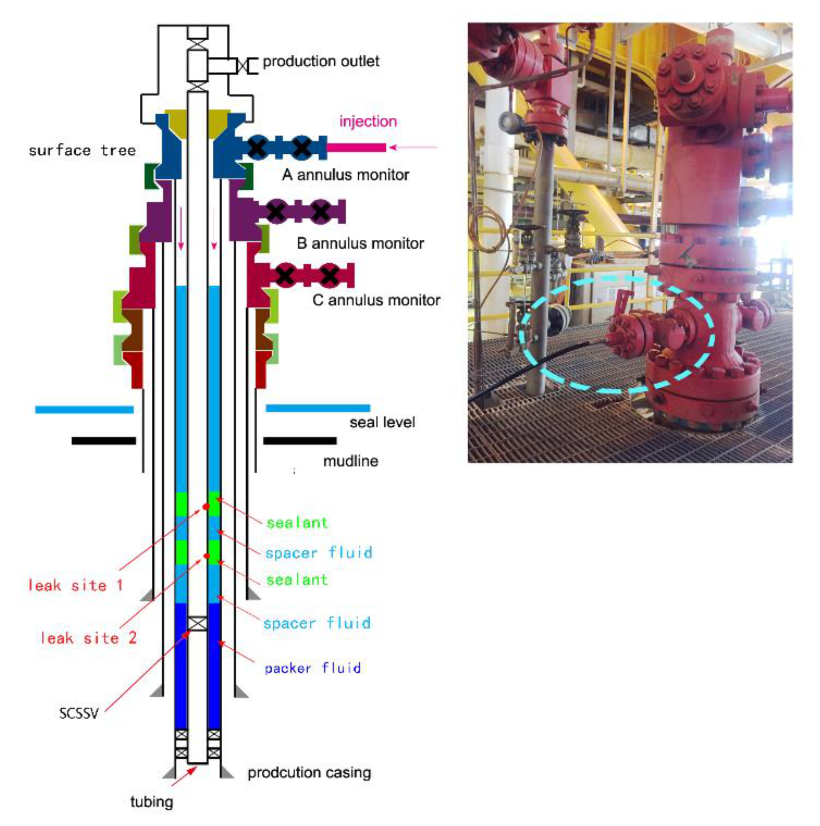
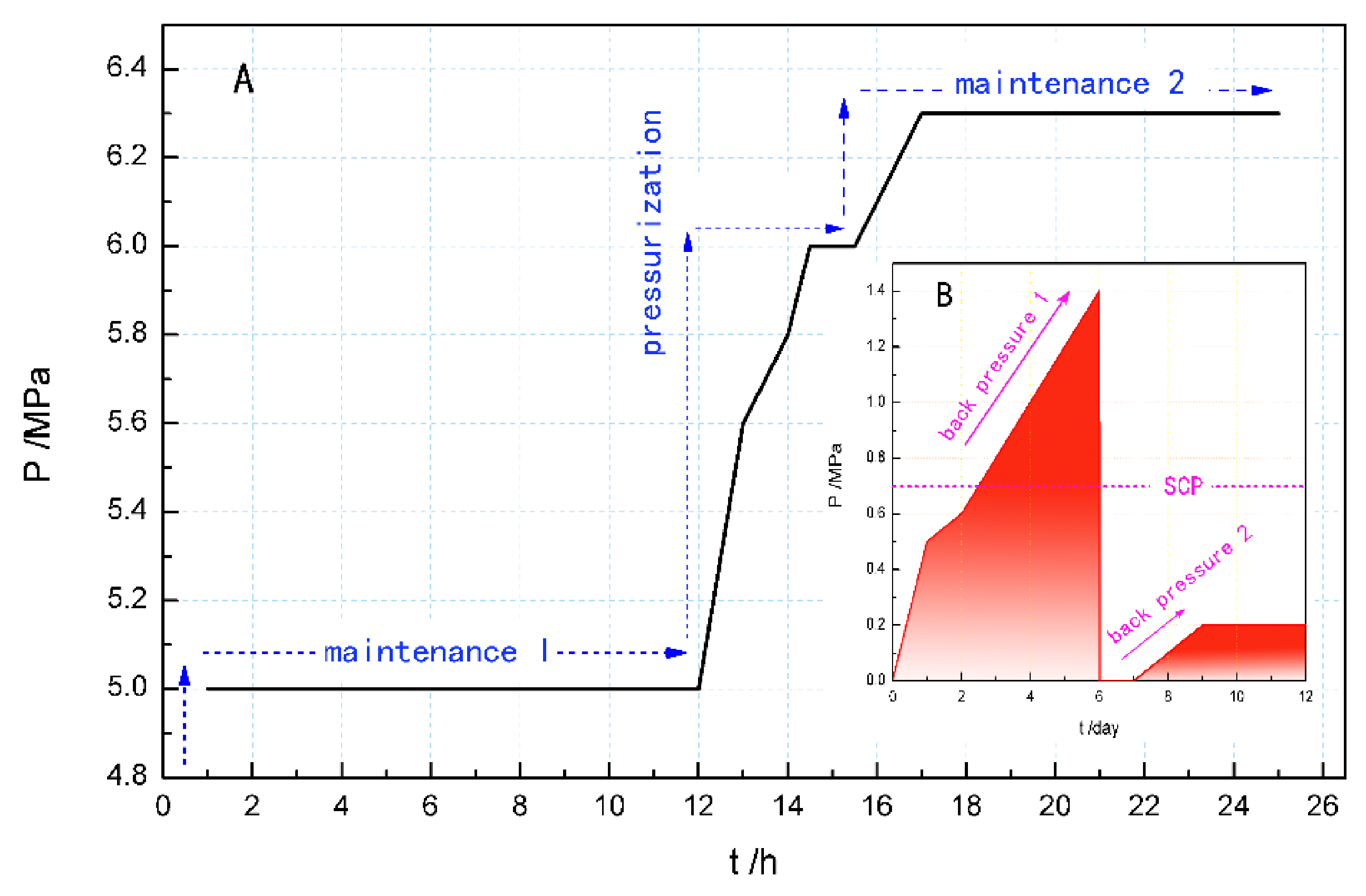
| Seal Leaks | SCP (MPa) | Annular Fluid Level * (m) | Leak Position (m) | Leak Geometry |
|---|---|---|---|---|
| Tubing | 0.7 | 208.5 | Leak site 1: 164.02 | Narrow ** |
| Leak site 2: 185.36 |
Publisher’s Note: MDPI stays neutral with regard to jurisdictional claims in published maps and institutional affiliations. |
© 2020 by the authors. Licensee MDPI, Basel, Switzerland. This article is an open access article distributed under the terms and conditions of the Creative Commons Attribution (CC BY) license (http://creativecommons.org/licenses/by/4.0/).
Share and Cite
Xu, L.; Huang, X.; Huang, X.; Xu, J.; Xing, X.; Xu, M.; Ma, C.; Huang, M. Systematic Experimental Investigation on In-Situ Self-Adaptive Sealing Property of Composite Pressure-Activated Sealant for Curing Minor Tubular Leaks. Energies 2020, 13, 5597. https://doi.org/10.3390/en13215597
Xu L, Huang X, Huang X, Xu J, Xing X, Xu M, Ma C, Huang M. Systematic Experimental Investigation on In-Situ Self-Adaptive Sealing Property of Composite Pressure-Activated Sealant for Curing Minor Tubular Leaks. Energies. 2020; 13(21):5597. https://doi.org/10.3390/en13215597
Chicago/Turabian StyleXu, Lin, Xiaohe Huang, Xin Huang, Jie Xu, Xijin Xing, Mingbiao Xu, Chao Ma, and Meilan Huang. 2020. "Systematic Experimental Investigation on In-Situ Self-Adaptive Sealing Property of Composite Pressure-Activated Sealant for Curing Minor Tubular Leaks" Energies 13, no. 21: 5597. https://doi.org/10.3390/en13215597
APA StyleXu, L., Huang, X., Huang, X., Xu, J., Xing, X., Xu, M., Ma, C., & Huang, M. (2020). Systematic Experimental Investigation on In-Situ Self-Adaptive Sealing Property of Composite Pressure-Activated Sealant for Curing Minor Tubular Leaks. Energies, 13(21), 5597. https://doi.org/10.3390/en13215597





